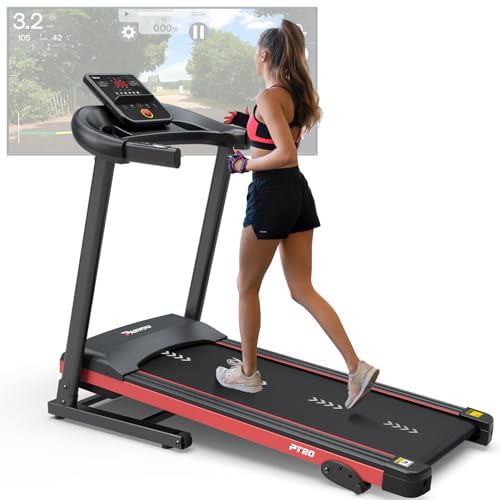The Allure of Treadmills Without Electricity: A Comprehensive Guide
In a world increasingly dominated by modern fitness devices, the simpleness and usefulness of a treadmill that doesn't need electricity might appear like a throwback. However, treadmills without electricity-- often referred to as "manual treadmills"-- have actually gotten significant popularity amongst fitness enthusiasts see king a more straightforward, eco-friendly exercise alternative. This article delves into the myriad benefits, functions, and factors to consider surrounding manual treadmills, as well as answering common concerns from prospective purchasers.
What is a Manual Treadmill?
A manual treadmill is a piece of workout equipment that permits users to walk or run without needing electrical power. Rather than motorized treadmills that move the belt for you, manual treadmills count on the user's own effort to propel the belt forward. Here's a fast contrast in between manual and motorized treadmills:
| Feature | Manual Treadmill | Motorized Treadmill |
|---|---|---|
| Power Source | None | Electricity required |
| Operative Mechanism | User-powered | Motor-driven |
| Expense | Usually more affordable | Typically more pricey |
| Portability | Highly portable | Typically heavier, less portable |
| Maintenance | Low | Requires more maintenance |
| Workout Intensity | Greater (more effort) | Can be adjusted |
Advantages of Using a Manual Treadmill
Economical:
- Manual treadmills are typically much less expensive than their electrical counterparts. With a lower preliminary investment and no continuous electricity expenses, these treadmills can be an exceptional option for budget-conscious individuals.
Eco-Friendly:
- As there are no motors or electrical parts involved, manual treadmills are a sustainable choice. They do not take in fossil fuels and leave a smaller sized carbon footprint.
Flexible Workout:
- Because they require the user to create their own momentum, manual treadmills can use more intense exercises, ideal for those wanting to increase their stamina and strength.
Mobility:
- Manual treadmills are often lighter and simpler to transport. They enable users to easily store them away or move them from one place to another.
Minimized Risk of Injury:
- By enabling a more natural running movement, manual treadmills can help decrease the risk of injury compared to motorized alternatives. Users have control over their pace and can stop or decrease immediately.
Key Features to Consider
When considering a manual treadmill, specific features need to be taken into account:
- Belt Quality: Look for a non-slip, resilient surface that offers sufficient grip for safety throughout workouts.
- Incline Levels: Many manual treadmills included adjustable incline functions. Greater inclines can increase exercise intensity.
- Measurements: Space can be a limitation, so taking a look at the treadmill's footprint is essential.
- Weight Capacity: Always examine the producer's weight recommendations to make sure security and longevity.
- Display Monitor: Some manual treadmills include fundamental monitors for tracking elapsed time, distance, and calories burned.
| Function | Description |
|---|---|
| Belt Quality | Non-slip and resilient products for security |
| Incline Levels | Adjustable settings for increased workout problem |
| Dimensions | Size and weight for ease of storage and transportation |
| Weight Capacity | Guarantee the treadmill accommodates the user's weight comfortably |
| Display Monitor | Optional efficiency tracking includes |
Selecting the Right Manual Treadmill
Offered the variety of manual treadmills readily available on the market, picking the right one involves examining individual physical fitness objectives and requirements. Here's a streamlined list to direct customers:
- Assess your fitness objectives: Are you aiming for weight reduction, endurance, or basic fitness?
- Think about the available area: Ensure the treadmill will fit well in your designated workout location.
- Check for functions: Look for adjustable incline settings or added technology such as a range tracker.
- Research brands and reviews: Read about the experiences of other users to gauge the dependability and sturdiness of the model you're considering.
- Set a spending plan: Compare various models while keeping your spending plan in mind.
Regularly Asked Questions (FAQ)
1. Are manual treadmills ideal for all physical fitness levels?
Yes, manual treadmills cater to different fitness levels. Beginners can start at a slower rate, while advanced users can increase strength and speed.
2. How do manual treadmills impact calorie burn as compared to motorized ones?
Manual treadmills might lead to higher calorie burn throughout workouts, as users must apply more effort to move the belt.
3. Do I need to assemble a manual treadmill?
The majority of manual treadmills come partly put together, but you'll likely need to finish some assembly depending upon the design.
4. Can I perform interval training on a manual treadmill?
Absolutely! Manual treadmills are outstanding for interval training given that users can quickly change their rate and start/stopping movements.
5. How do I maintain a manual treadmill?
Upkeep is basic: routine cleaning of the belt and frame, inspecting for wear and tear, and guaranteeing empty storage when not in use.
Manual treadmills use various benefits, making them an attractive option for many fitness enthusiasts. Their energy-efficient design, combined with the capability to offer reliable exercises, has cemented their place in home physical fitness routines. With a clear understanding of their functions and benefits, people can make an educated choice about whether a manual treadmill is the best choice for their health journey.
The straightforward appeal of manual treadmills-- paired with their cost-effectiveness and sustainability-- guarantees they stay pertinent in today's fitness market, offering an engaging option to electric designs.

